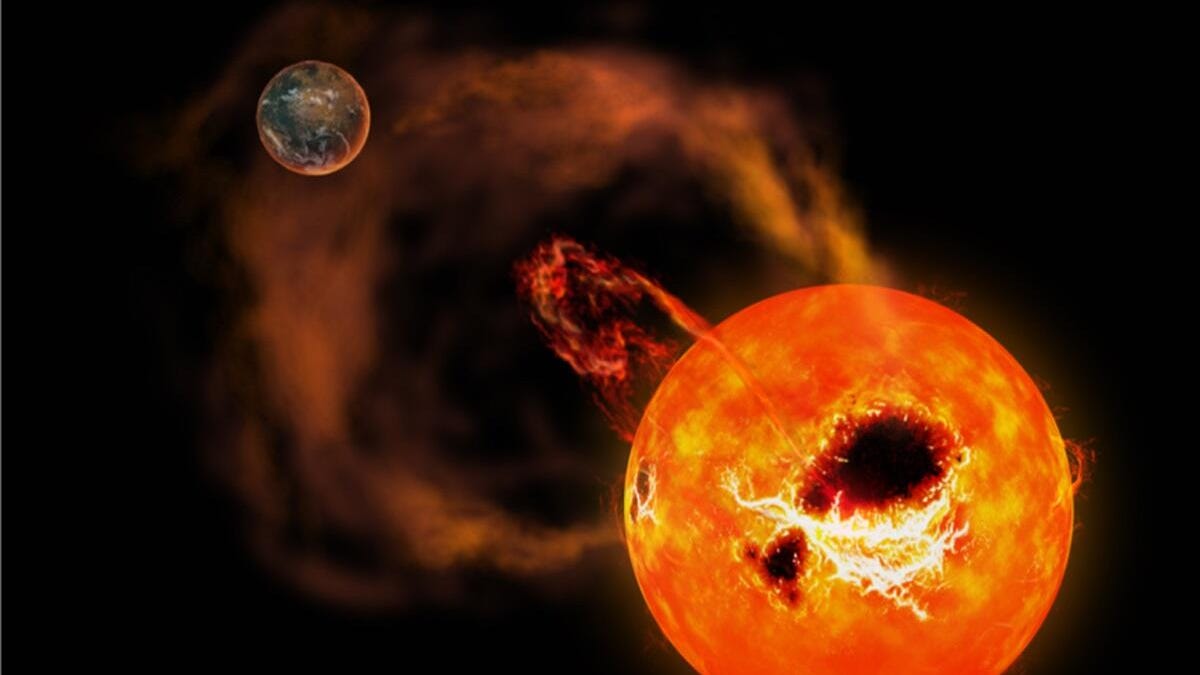Astronomers catch massive stellar flares on nearby small star AD Leonis
One superflare was far more powerful than what astronomers typically see from our own sun.

An illustration of the stellar flares on AD Leonis 16 light-years away. Its lower temperature makes it a prime target to study flares and the more explosive "superflare."
Recently, astronomers in Japan trained one of their newest telescopes on the red dwarf star AD Leonis, just 16 light-years from Earth, and were stunned by what they saw.
The team caught the small, relatively dim star blasting a dozen stellar flares into the cosmos, including one 20 times larger than the solar flares our own sun emits.
"Solar flares are sudden explosions that emanate from the surfaces of stars," explained Kosuke Namekata of Kyoto University, in a statement.
But the most powerful explosion seen at AD Leonis can be considered a superflare, something rarely seen from our sun but more common to turbulent and highly active red dwarf stars.
"Our analyses of the superflare resulted in some very intriguing data," Namekata said, adding that the energy seen in the superflare's hydrogen atoms was roughly 10 times higher than a typical flare from our own sun.
In a paper published Thursday in Publications of the Astronomical Society of Japan, Namekata and colleagues describe a week spent watching AD Leonis using Kyoto University's new Seimei telescope.
"It's the first time this phenomenon has been reported, and it's thanks to the high precision of the Seimei Telescope," said Namekata, noting that the team picked up the superflare on its first night of observations.
Study leader Kazunari Shibata says the work might be helpful in predicting superflares from our own sun, which could do significant damage to our satellites and electrical infrastructure on Earth. Perhaps even more consequential, it could help answer some of the biggest questions of the cosmos.
"We may even be able to begin understanding how these emissions can affect the existence, or emergence, of life on other planets."

